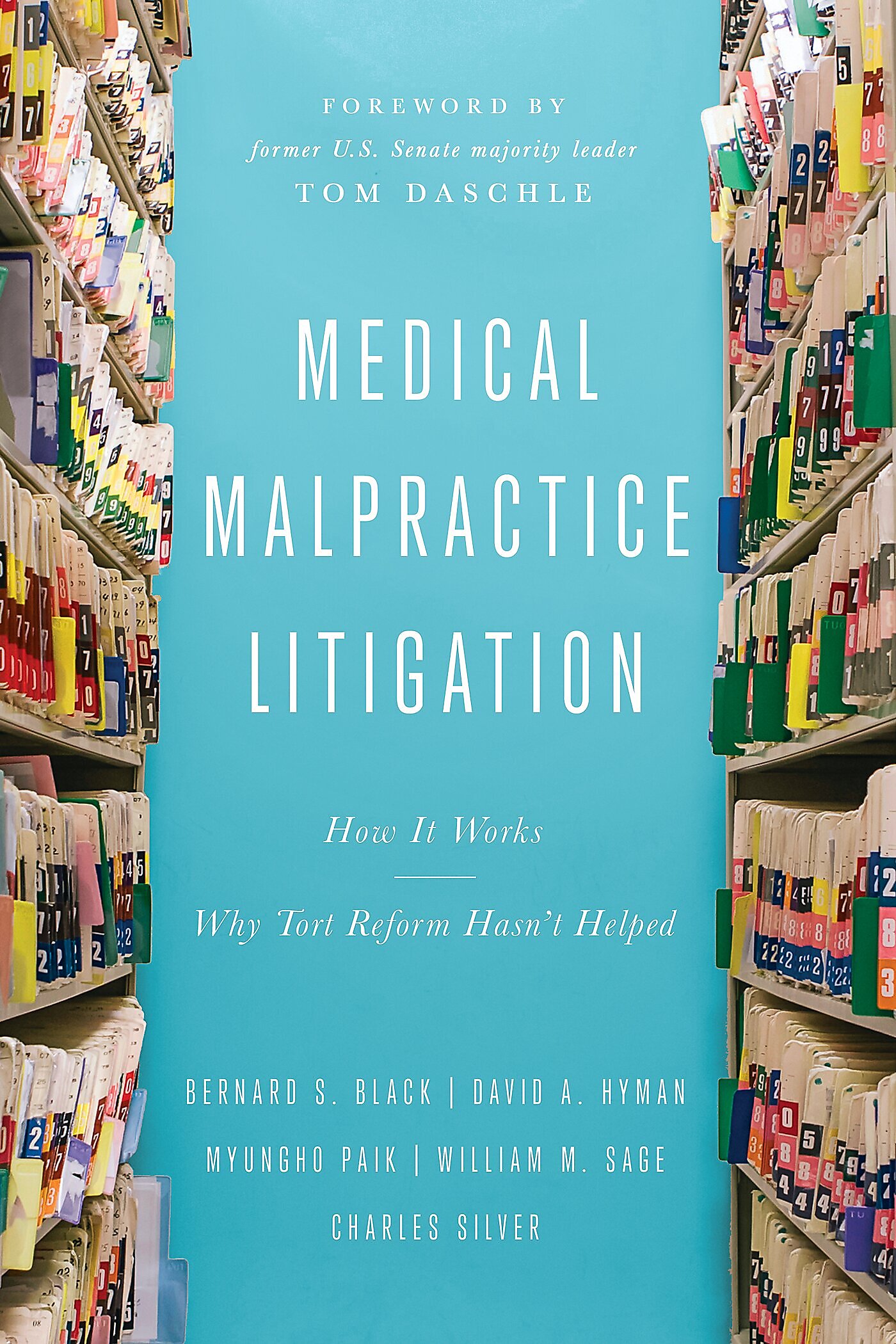The Cato Institute today releases its latest health-policy book, Medical Malpractice Litigation: How It Works, Why Tort Reform Hasn’t Helped, by Bernard S. Black, David A. Hyman, Myungho S. Paik, William M. Sage, and Charles Silver. (Hyman and Silver are Cato adjunct scholars.)
The book compiles decades of real-world data to shatter persistent myths that surround the debate over “med mal” reform.
In the foreword, former Senate Majority Leader Tom Daschle (D) writes:
Providers argue that limiting physicians’ exposure to liability will improve access to care, asserting that such protections would attract physicians to areas with physician shortages, reduce the cost of running a physician practice, and make it more appealing for physicians to treat high-risk patients. I was on the receiving end of many such briefings.
On the other side, trial lawyers are equally insistent that limiting physician liability would not reduce health care costs or improve access. They predict there would be many more injured patients once caps on damages reduced or eliminated the liability risk for negligent treatment…
The authors present research suggesting that while the medical malpractice liability system is unlikely to be the cause of those premium spikes, it isn’t doing nearly enough to make health care safer or better. And the usual reforms that some health care providers seek may not be doing much to help patients or taxpayers. Where states have enacted those reforms, they mostly seem to benefit health care providers and liability insurers.
Specifically, authors find:
- The med mal system: doesn’t fully compensate negligently injured patients; fails severely injured patients the most; doesn’t do enough to encourage providers to improve quality and patient safety; is costly and slow; and frustrates both plaintiffs and defendants. Indeed, paid claims have declined steadily over the past 20 years, while the system has largely frozen out smaller claims.
- The usual reforms—legislatively imposed caps on the amounts that negligently injured patients can collect in damages—don’t fix any of the above problems and actually make some of them worse.
- While periodic spikes in physicians’ medical malpractice liability premiums drives demand for med mal reform, the causes of such spikes lie outside the litigation system. Moreover, med mal liability insurance premiums have been falling since 2005 and are now back where they were in the mid-1990s.
The authors even find evidence suggesting caps on damages—contrary to supporters’ promises—may be increasing spending. Below is Figure 12.1 from the book, which shows that when states enacted caps on damages, Medicare Part B spending increased relative to states that already had caps on the books and to states that did not.
Order or download your copy today through Amazon or the Cato book store.

